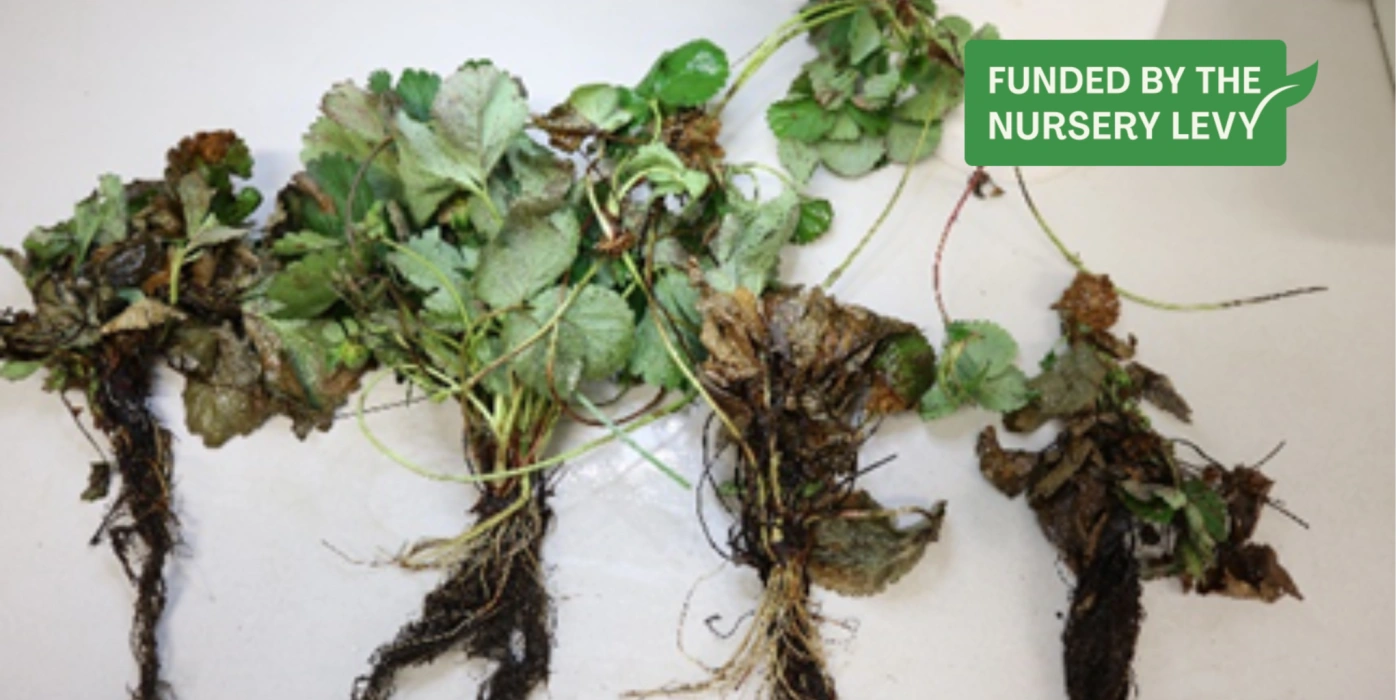June 2025 pest alert: Neopestalotiopsis rosae - a growing threat in wet conditions
19 June 2025

19 June 2025
Neopestalotiopsis rosae (pronounced Neo-pesta-low-tee-op-sis) is a fungal pathogen that typically causes leaf spot, but under the right conditions can become far more destructive. In recent years, it has emerged as a serious threat to strawberry crops – particularly in wet weather – and is now being detected growing on a range of other hosts, including blueberry, Douglas fir, mango and various ornamental species.
Symptoms
In strawberries, where it causes the greatest damage, the fungus doesn’t stop at leaf spots. It can also lead to:
- crown rot
- root rot
- fruit rot
- plant dieback and death (similar to Phytophthora).
These symptoms are often indistinguishable from other common leaf spot diseases. When present in grafted plants, the fungus can also cause graft incompatibility and scion death.
Management
Management practices for N. rosae and related species follow the same principles used for other leaf spot pathogens.
Focus on reducing moisture and improving plant hygiene:
- adjust irrigation schedules to minimise leaf wetness
- improve airflow around plants to help leaves dry
- ensure irrigation water is clean or treated to remove potential pathogens
- remove and dispose of spotted leaves
- regularly monitor overall plant health, especially stems and roots if leaves begin to die off.
Suspected infection? What next
If you’re concerned about possible virus infection, you can submit photos and leaf samples to Grow Help Australia. All production nurseries are eligible for six free virus tests until the end of 2025.
Nurseries certified under NIASA and BioSecure HACCP are already building virus vigilance into their everyday practices – from propagation hygiene to dispatch checks. These industry standards help reduce biosecurity risks and support consistent plant health outcomes.
Need support? Your local GIA extension officer can help review hygiene protocols, interpret symptoms or talk you through the testing process.
Contact your local extension officer:
- QLD/Northern NSW: Barry Naylor barry.naylor@greenlifeindustry.org.au
- NSW/Northern Vic: Colin Hunt colin.hunt@greenlifeindustry.org.au
- Vic: Stuart Burns stuart.burns@greenlifeindustry.org.au
- WA/NT: Steve Blyth steve.blyth@greenlifeindustry.org.au
- TAS/SA: Celeste Cook celeste.cook@greenlifeindustry.org.au
- National Biosecurity Manager, John McDonald john.mcdonald@greenlifeindustry.org.au

